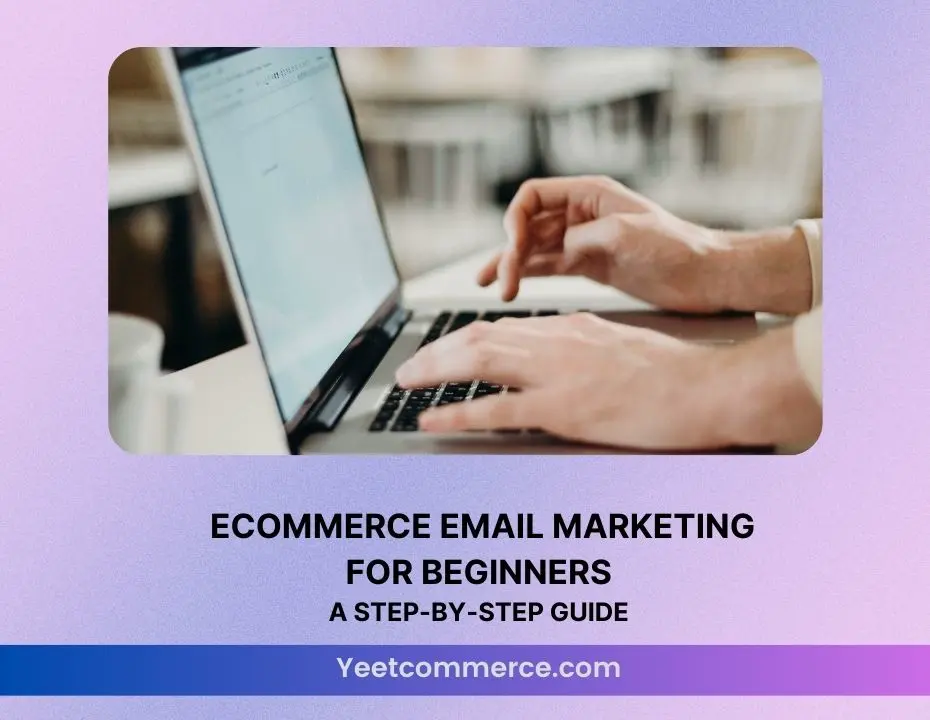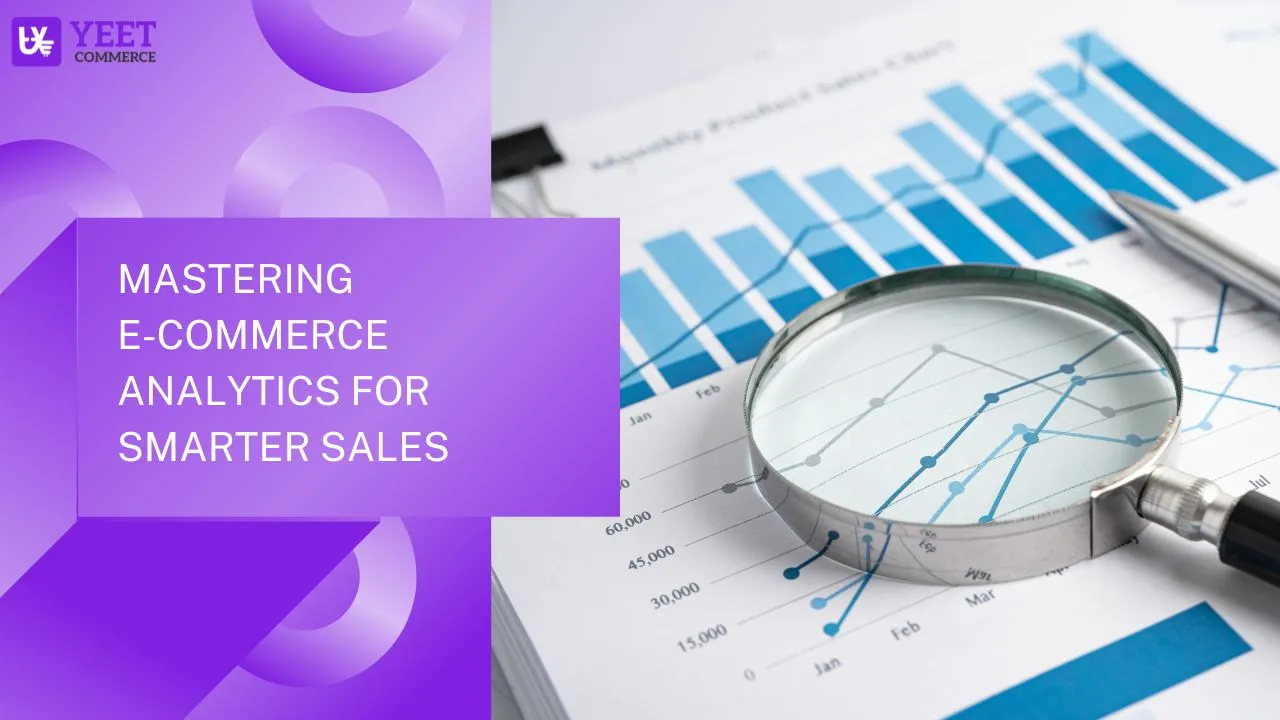E-commerce Email Marketing remains a powerful tool for eCommerce businesses, especially for beginners venturing into the world of online sales. It offers a direct line of communication to your target audience, allowing you to nurture leads, build customer relationships, and drive sales. However, simply sending out emails isn’t enough. Mastering eCommerce email marketing requires a strategic approach, understanding the fundamentals, and implementing best practices to cut through the noise and capture your audience’s attention. This guide will provide beginners with essential tips and actionable strategies to create effective email campaigns, boost engagement, and ultimately, achieve eCommerce success.
Why Email Marketing Matters for Your Online Store
If you’re running an online store, E-Commerce Email Marketing isn’t just an option—it’s a game-changer. While social media and paid ads fight for attention, email marketing quietly delivers some of the highest returns. According to HubSpot, email marketing generates $42 for every $1 spent, making it one of the most profitable marketing channels available.
Think about it—you own your email list. No algorithm changes, no pay-to-play tactics. You get direct access to your audience’s inbox, where you can nurture relationships, boost sales, and keep customers engaged. “The money is in the list,” as marketing expert Brian Kurtz puts it, and eCommerce businesses that master email marketing will always have an edge.
Why Email Converts Better Than Social Media
Many online store owners pour resources into social media, but here’s the truth: email consistently outperforms social in driving sales. Research from Campaign Monitor found that emails have a conversion rate of 6.05%, while social media hovers around 1.9%. That’s more than three times the effectiveness!
Why? Because emails are personal. They land in a customer’s inbox, not in a crowded social feed. You’re talking directly to your audience, not shouting into the void of social media. Plus, you can segment your emails based on customer behavior, making them hyper-relevant.
Instead of hoping your Instagram post gets noticed, a well-timed email with a discount code can bring customers back to your store instantly. Personalized emails deliver 29% higher open rates and 41% higher click-through rates (Source: Experian), meaning you’ll see real engagement, not just likes and shares.
Building Customer Loyalty and Lifetime Value
Winning a sale is great, but keeping customers coming back? That’s where eCommerce email marketing shines. Studies show that repeat customers spend 67% more than new ones (Bain & Company). A simple welcome email, abandoned cart reminder, or VIP discount can turn a one-time buyer into a loyal fan.
Think of brands like Amazon and Sephora—both use strategic email campaigns to keep customers engaged. From birthday discounts to exclusive previews, they make subscribers feel valued. You can do the same by offering personalized recommendations, loyalty rewards, or special early access to sales.
By focusing on retention, you’ll reduce customer acquisition costs and increase profits. And the best part? Automated email sequences do the heavy lifting for you, ensuring your store stays top-of-mind without constant effort.
Setting Up Your First eCommerce Email Campaign
Step 1: Build a High-Quality Email List
Before you send a single email, you need a list of engaged subscribers. But not just any list—a high-quality, permission-based list. Buying email lists might seem like a shortcut, but it’s a fast track to low engagement and spam complaints. According to Statista, global email spam rates hover around 45%, meaning your carefully crafted messages could end up in the junk folder if you don’t build your list correctly.
So, how do you do it the right way? Offer value in exchange for an email. A 10% discount, a free guide, or exclusive early access to sales can work wonders. As marketing guru Neil Patel says, “People don’t give away their email for free. They give it in exchange for something valuable.”
Make sign-ups easy. Place email opt-in forms on your homepage, checkout page, and blog. Use pop-ups strategically—exit-intent pop-ups can boost conversions by 5-10% (OptinMonster). The more seamless the experience, the faster your list will grow.
Step 2: Choose the Right Email Marketing Platform
The right E-Commerce Email Marketing platform can make or break your campaigns. You need automation, segmentation, and analytics—all without a steep learning curve. Popular platforms like Klaviyo, Mailchimp, and Omnisend are designed for eCommerce businesses, offering powerful tools to track customer behavior and personalize emails.
Why does this matter? Personalized emails drive 6x higher transaction rates than generic ones (Source: Campaign Monitor). If your platform allows you to segment by purchase history, browsing behavior, or engagement level, you can send the right message at the right time.
When choosing a platform, look for:
Automation tools – Set up abandoned cart emails, welcome series, and follow-ups.
Segmentation capabilities – Group customers based on interests, purchase frequency, and more.
A/B testing – Test subject lines, images, and CTAs to maximize conversions.
Investing in a robust platform now will save you time and boost your email marketing success in the long run.
Step 3: Craft Your First Email Sequence
Once your list and platform are set, it’s time to craft your first E-Commerce Email Marketing campaign. But don’t just send random promotions—create a structured email sequence that builds relationships and drives sales.
Here’s a simple beginner-friendly email flow:
1️⃣ Welcome Email (Sent immediately) – Thank subscribers, introduce your brand, and offer an exclusive discount. Welcome emails have an open rate of 50% (Source: Experian), making them your best chance to make a great first impression.
2️⃣ Value-Driven Follow-Up (Sent 2-3 days later) – Share useful content like styling tips, product guides, or customer testimonials to keep engagement high.
3️⃣ Product Recommendation Email (Sent after a week) – Use customer data to suggest relevant products. Personalized product emails increase revenue by 20% (Source: Monetate).
4️⃣ Abandoned Cart Email (Sent within 24 hours of cart abandonment) – Nearly 70% of carts are abandoned (Baymard Institute), but a well-timed reminder with a small discount can recover lost sales.
5️⃣ Loyalty or VIP Offer (Sent after the first purchase) – Encourage repeat business with a rewards program or special VIP offer. Repeat customers spend 67% more than new ones (Bain & Company).
By automating this sequence, you’ll nurture leads, boost conversions, and build a loyal customer base without lifting a finger.
Top Tools to Integrate with Yeetcommerce for Better Email Marketing
E-Commerce Email Marketing, the right tools can make all the difference. Whether you’re sending welcome emails, promotional offers, or order confirmations, choosing the best integrations for your store is essential to getting the most out of your email campaigns. By integrating Yeetcommerce with powerful email marketing tools and using SMTP integrations, you can ensure better deliverability, enhanced customer engagement, and higher conversion rates. Let’s dive into the top tools that you should consider integrating with Yeetcommerce to streamline your email marketing efforts.
Yeetcommerce CRM Tools for Powerful Email Marketing
Yeetcommerce’s CRM tools allow eCommerce store owners to send emails directly to specific customers using SMTP integrations. Built-in email templates are available, and store owners can customize them to match their brand and messaging needs.
Top Tools to Integrate with Yeetcommerce for Better Email Marketing
In eCommerce, the right email marketing tools can transform customer engagement and boost sales. Whether you’re sending welcome emails, promotions, or order confirmations, having the best integrations ensures seamless communication and higher conversions. By connecting Yeetcommerce with top-tier email marketing tools and leveraging SMTP setups, you can improve email deliverability, automate workflows, and personalize campaigns.
Why Integrate Email Marketing Tools with Yeetcommerce?
Email marketing goes beyond just sending messages—it’s about creating meaningful customer interactions that drive sales.With Yeetcommerce’s built-in CRM tools and seamless integrations, you can optimize your campaigns for better engagement and higher conversions and you already have a powerful eCommerce platform, but integrating email marketing tools and SMTP services makes your campaigns more efficient, reliable, and scalable. These integrations help automate workflows, segment your audience, and analyze campaign performance, all from an intuitive dashboard.
SendGrid – Reliable Email Deliverability for High-Volume Campaigns
If you’re scaling your email campaigns or sending high-volume messages, SendGrid is one of the best platforms to integrate with Yeetcommerce. It ensures your emails reach the right inboxes at the right time.
Why Use SendGrid with Yeetcommerce?
- SMTP Integration – Send transactional emails like order confirmations and shipping updates directly from your domain for better deliverability.
- Scalability – Whether sending 100 or 100,000 emails, SendGrid can handle high-volume campaigns, making it ideal for seasonal promotions.
- Advanced Analytics – Track email performance, bounce rates, and unsubscribes to optimize your strategy.
With 50+ billion emails sent monthly, SendGrid is a trusted solution for businesses that require high-performance email marketing.
By integrating Yeetcommerce with the right tools, you can enhance customer engagement and maximize the impact of your email campaigns.
Yeetcommerce SMTPs Integration for Email Campaigns
If you want full control over your E-Commerce Email Marketing, integrating an SMTP (Simple Mail Transfer Protocol) server with Yeetcommerce is a game-changer. SMTP allows you to send emails directly from your store’s domain, improving deliverability, branding, and reliability.
Why Use SMTP for Yeetcommerce Email Campaigns?
- Higher Deliverability – Avoid spam folders and ensure emails land in your customers’ inboxes.
- Better Branding – Send emails using your own domain (e.g., sales@yourstore.com) instead of a generic sender.
- Scalability – Handle high email volumes without relying on third-party limits.
How to Integrate SMTPs with Yeetcommerce?
Step 1: Choose an SMTP Service
Popular options include:
SendGrid – Ideal for high-volume email marketing with analytics.
Amazon SES – Cost-effective for businesses sending thousands of emails.
Postmark – Great for fast and reliable email delivery.
Mailgun – Perfect for transactional and promotional emails.
Step 2: Configure SMTP Settings in Yeetcommerce
- Log in to Yeetcommerce Admin Panel.
- Navigate to Email Settings > SMTP Configuration.
- Enter your SMTP provider’s details:
- SMTP Server (e.g., smtp.sendgrid.net)
- Port (587 for TLS, 465 for SSL)
- Username & Password (from your SMTP provider)
- Encryption Type (TLS or SSL)
- Click Save & Test Connection to ensure it works.
Step 3: Set Up Automated Email Campaigns
Now that SMTP is integrated, you can:
📩 Send order confirmations & receipts instantly.
📢 Automate abandoned cart recovery emails.
🎉 Create personalized email promotions based on customer activity.
How to Measure the Success of Your Email Campaigns
Now that you’ve set up your E-Commerce Email Marketing campaigns, the next step is determining how well they’re performing. Without proper measurement, it’s like sailing a ship without a compass—you have no idea if you’re on the right course. Measuring the success of your email campaigns is crucial to understanding what works and what doesn’t. By focusing on key metrics, you can optimize your strategy, improve customer engagement, and boost your sales. Let’s dive into the most important metrics to track for your eCommerce email marketing campaigns.
Why Measuring Email Campaigns Matters
The beauty of email marketing lies in its ability to deliver immediate results. With DMA’s 2023 report, email marketing yields an ROI of 42:1, meaning you can expect to earn $42 for every $1 spent. However, this only happens if you’re tracking the right metrics and making data-driven decisions. As Neil Patel puts it, “Without tracking, you’re just guessing. And when you guess, you’re bound to lose.”
To make sure you’re getting the best return on investment (ROI), you need to analyze performance thoroughly. By monitoring key email campaign metrics, you gain valuable insights into how to refine your approach, increase conversions, and build better relationships with your customers.
Let’s break down the most important metrics you should track to measure the success of your E-Commerce Email Marketing campaigns.
1. Open Rate: Are Your Emails Being Seen?
The open rate is one of the most fundamental metrics to track. Simply put, it tells you how many recipients opened your email compared to the number of emails delivered. A low open rate may indicate that your subject lines are not compelling enough, or your emails are being lost in spam folders.
- How to Improve Open Rates:
- Craft Engaging Subject Lines: Your subject line is the first thing your recipient sees, so it must grab their attention. Make it short, intriguing, and personalized.
- Use A/B Testing: Experiment with different subject lines to see which ones resonate with your audience.
- Optimize for Mobile: More than half of emails are opened on mobile devices, so ensure your emails are mobile-friendly to improve open rates.
According to Campaign Monitor, the average open rate for eCommerce email campaigns is around 18%. If yours is below this, it’s time to start refining your subject lines and sending strategies.
2. Click-Through Rate (CTR): Are Recipients Engaging with Your Content?
Once your recipients open your email, the next question is: Are they engaging with the content inside? The click-through rate (CTR) tells you the percentage of recipients who clicked on a link in your email, whether it’s a product link, call-to-action (CTA), or promotional offer.
A higher CTR indicates that your email’s content is resonating with your audience, while a low CTR might suggest that your emails aren’t delivering value or your CTAs aren’t clear.
- How to Improve CTR:
- Clear and Compelling CTAs: Make sure your calls to action are action-oriented and easy to find. Words like “Shop Now” or “Grab Your Discount” work well.
- Segment Your Audience: Personalized content leads to more clicks. By segmenting your audience based on behavior, you can send them more relevant offers that drive action.
- Test Your Links: Always ensure that your links work and lead to a relevant landing page. Broken links can hurt your CTR and frustrate recipients.
According to WordStream, the average CTR for retail email campaigns is 2.5%. Aim for this benchmark or higher by continuously testing and optimizing your email content.
3. Conversion Rate: Are You Turning Clicks Into Sales?
At the end of the day, the most important metric is the conversion rate. This tells you how many of those clicks actually resulted in a purchase. Whether it’s completing a sale, signing up for a webinar, or downloading a guide, conversions show the effectiveness of your email in achieving your desired outcome.
If your CTR is high but your conversion rate is low, this could mean your landing page or product page isn’t optimized for conversions. Perhaps the offer isn’t compelling enough, or the checkout process is too complicated.
- How to Improve Conversion Rates:
- Personalized Product Recommendations: Send emails that recommend products based on previous customer behavior. This increases the likelihood of a purchase.
- Simplify the Checkout Process: Ensure your checkout process is easy, fast, and mobile-friendly to avoid cart abandonment.
- Create Urgency: Use limited-time offers or countdown timers to encourage immediate action.
According to SaleCycle, the average conversion rate for eCommerce email campaigns is about 1.5%. With a well-crafted email and optimized landing page, you can expect to see higher conversion rates.
4. Bounce Rate: Are Your Emails Reaching the Right Audience?
The bounce rate measures how many of your emails didn’t get delivered due to invalid email addresses or technical issues. A high bounce rate could mean that your email list is outdated, or your emails are getting flagged by spam filters. Keeping this rate low is essential for maintaining a good sender reputation and ensuring high deliverability.
- How to Reduce Bounce Rates:
- Clean Your Email List Regularly: Regularly update your email list to remove invalid or inactive email addresses.
- Use Double Opt-In: Encourage new subscribers to confirm their email addresses to avoid sending messages to incorrect or invalid addresses.
- Authenticate Your Emails: Make sure you set up DKIM, SPF, and DMARC records to authenticate your emails and avoid them getting flagged as spam.
The average bounce rate for eCommerce emails is around 0.7%, but this can vary based on your list hygiene and sending practices.
5. Unsubscribe Rate: Are You Losing Subscribers?
While it’s natural to see some subscribers leave, a high unsubscribe rate can indicate that your emails are not meeting expectations. If your unsubscribe rate is higher than usual, it’s time to reevaluate your content, frequency, and value proposition. Offering relevant content that truly interests your audience can reduce unsubscribes.
- How to Reduce Unsubscribes:
- Provide Value: Ensure every email you send offers value to your audience, whether it’s a special discount, useful tips, or exclusive access.
- Don’t Overwhelm Subscribers: Bombarding your customers with too many emails can lead to frustration. Keep your emails relevant and not too frequent.
- Allow Preferences: Let your subscribers manage their email preferences, so they can opt for the types of emails they want to receive.
The average unsubscribe rate for eCommerce emails is about 0.2%, but if yours is higher, it’s time to rework your strategy.
Final Thought
Mastering E-Commerce Email Marketing might seem overwhelming at first, but with the right strategy and tools, you can turn it into a powerful revenue driver. By building a high-quality email list, crafting engaging campaigns, and leveraging automation, you’ll create a direct, meaningful connection with your customers. Whether you’re boosting sales, nurturing relationships, or recovering abandoned carts, email remains one of the most effective marketing channels. So, take the time to refine your approach, experiment with different tactics, and watch your online store thrive—one email at a time.


















